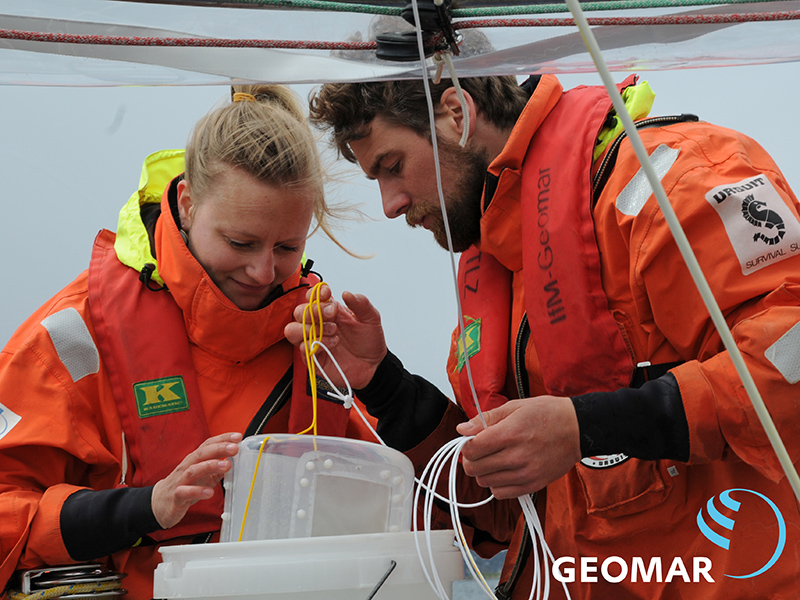To get a better impression how fishes will do under future conditions we decided to introduce fish larvae to the mesocosms. With that we will be able not only to record the interaction of several trophic stages under high CO2 conditions but also record the development of critical life stages such as the vulnerable larval phase.
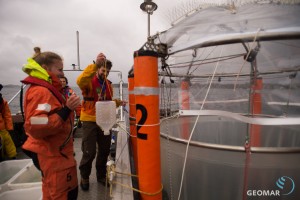
As we arrived at the end of the spawning season of the Atlantic Herring (Clupea harengus) it was really uncertain if we can get ready-to-spawn adult herring from the region. But with the professional help and know-how of Arild, Frank and Heikki from the University of Bergen (special thanks :)) it was possible to catch 2 perfect females and 3 even more perfect males north of Bergen. As herring has sticky eggs it was easy to put them on plastic plates where the MAGIC happened.
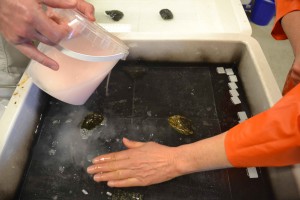
The fertilization lasted for about 15 minutes. After that a picture of each plate was taken to count every little single egg, in total we got 40.000 eggs! This was pretty exhausting but we came up with really great numbers of fertilization success (about 90%), so the effort was worth it.
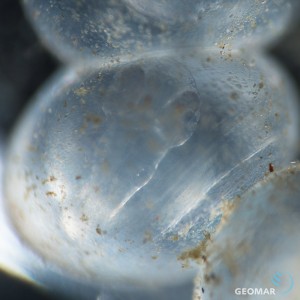
We have to admit that the rearing of several thousand herring eggs confronts you with strange parental feelings. Every day you check if everything is okay with the seawater inflow vents, temperature and pH or you rack your brain if the settling sediment in the water can possibly kill your precious little herring eggs. After 8 days of intense caring the heart beat and first little movements were finally visible under the binocular and this really was a special moment. O-tone Henni: „The heaaaaaaaart is beating!“
That very same day we put them out into the mesocosms. This was also very exciting, because we had to carefully place 2 egg plates into 1 incubator, without disturbing them to much.
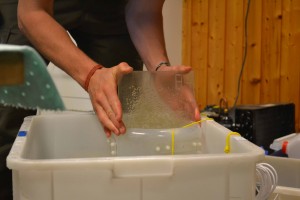
The sophisticated incubators were build by Flemming and colleagues from the AWI (credits) and are specially designed to allow the hatched larvae to swim into the mesocosm by its own. After 1 hour every 8 mesocosm received 1 incubator with about 3500 eggs inside and we were happy that everything went fine.
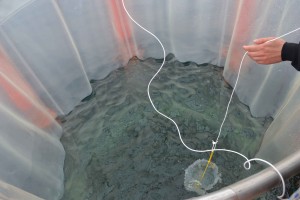
We expect that per mesocosm around 2500 larvae will hatch in about 3-5 days depending on the water temperature and from there we will see how they manage …but we will let you know! 🙂
By Henrike Wunderow and Michael Sswat
